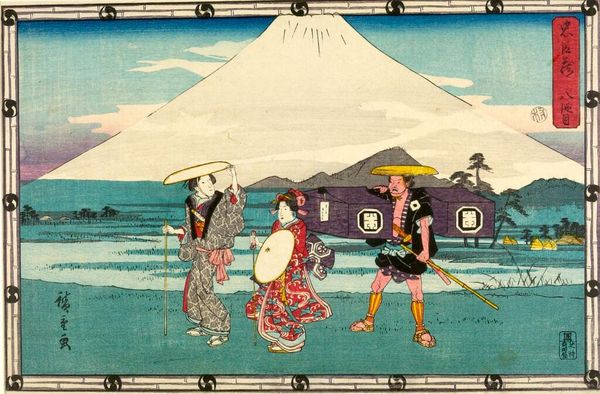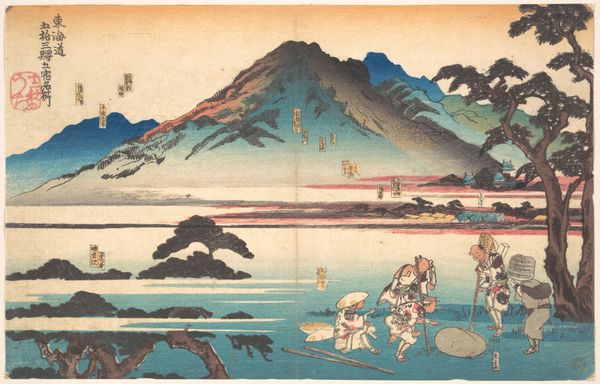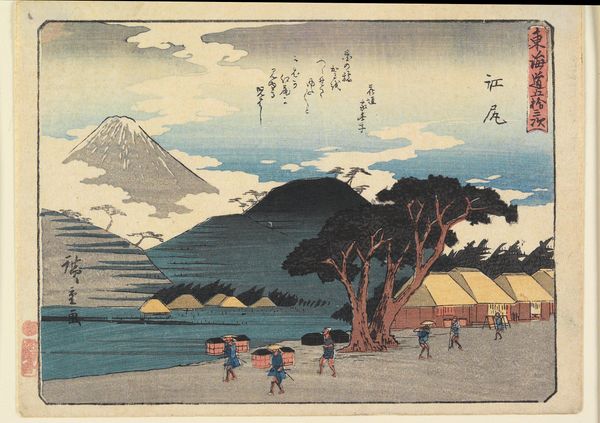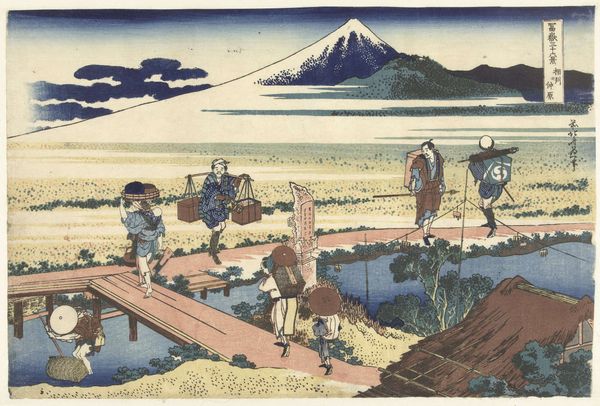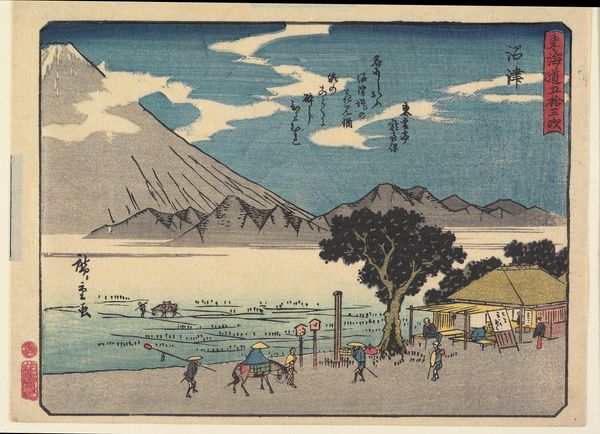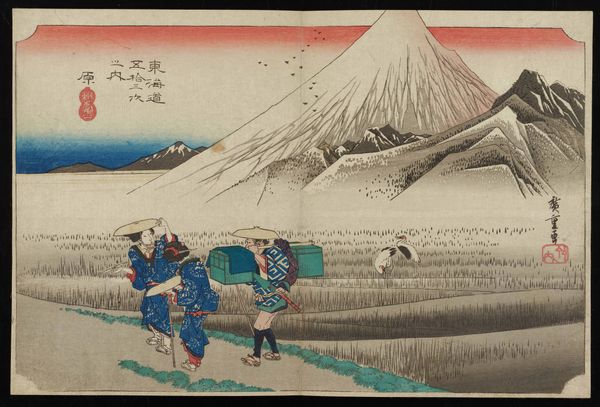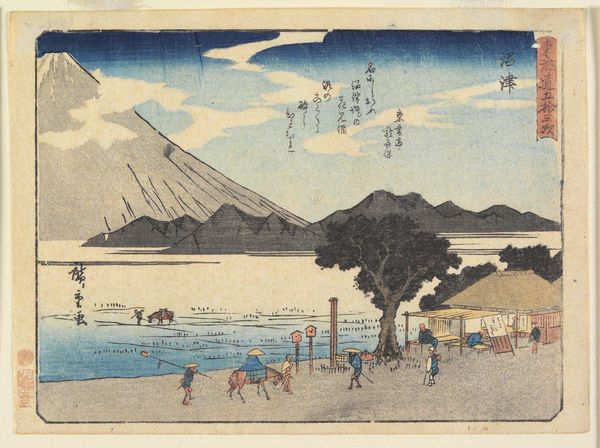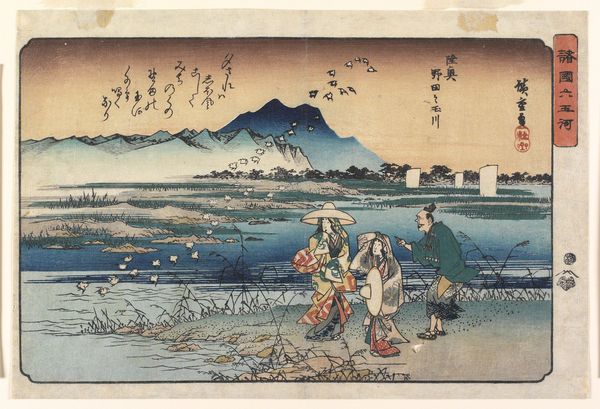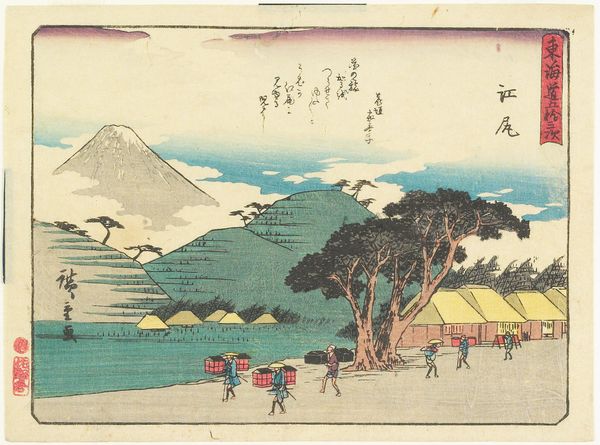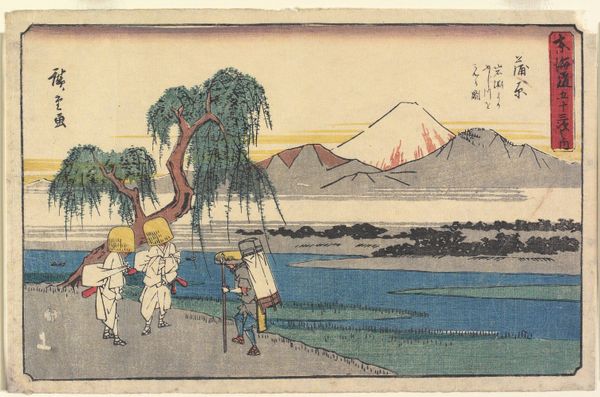
print, watercolor, ink
# print
#
asian-art
#
landscape
#
ukiyo-e
#
figuration
#
watercolor
#
ink
#
watercolor
Dimensions: 8 15/16 × 13 11/16 in. (22.7 × 34.7 cm) (image, horizontal ōban)
Copyright: Public Domain
Curator: What strikes me immediately about this print is the sheer flatness of the landscape, juxtaposed with the iconic, looming presence of Mount Fuji in the distance. The restrained palette adds to the tranquil feeling. Editor: You've zeroed in on precisely what makes this woodblock print, "Act VIII" by Utagawa Hiroshige so captivating. It dates from around 1843 to 1847, and what you're seeing here is a masterful example of ukiyo-e, the art of woodblock printing that thrived in Japan's Edo period. Prints like this, capturing scenes of daily life and famous landscapes, were not simply aesthetic objects. They served as powerful visual narratives circulating amongst a burgeoning merchant class with access to the arts. Curator: Absolutely. You can see this democratization of art through the way Hiroshige depicts the travelers – ordinary people with burdens, each lost in his or her thoughts, under the shadow of majestic Mount Fuji, emphasizing the shared experience of the population. The compositional use of perspective seems intentional to focus on society. Editor: Precisely. While I appreciate that reading, from my view the flattened perspective isn't necessarily a weakness, but rather an artistic choice that intensifies the relationship between foreground and background, accentuating the mountain's dominating form. There is a deliberate tension and unity produced through the repetition of form throughout. Curator: I find the subject to be so poignant—this tension, as you say, also embodies societal values of the time; a tension in their own class hierarchy through industrial change and the emerging merchant class. The artist's personal connection, too, in reflecting these realities and documenting landscape that would reflect that experience. Editor: Perhaps, yet those hues! It is the triad of blues and earth tones contrasted with that vivid burst of red and the other figures’ attires that create depth and guide our eye through the scene, wouldn't you agree? Curator: I’ll grant you the artistic technique, but I still contend that the print gives visual form to historical and cultural themes relevant to understanding Japan's cultural fabric at the time. The symbolism is unmistakable, echoing throughout society. Editor: Indeed. Ultimately, perhaps it is this merging of artistic form and the echoes of daily life that enables this relatively small watercolor and ink print to remain such an influential example. Curator: A beautiful example that invites layers of historical inquiry as well.
Comments
No comments
Be the first to comment and join the conversation on the ultimate creative platform.
